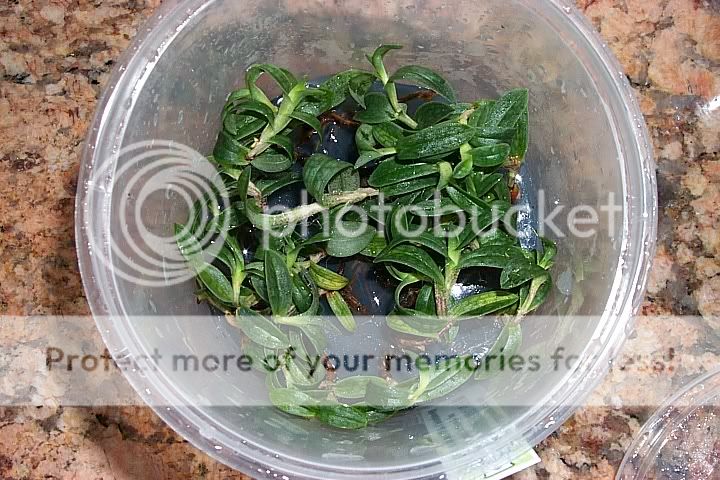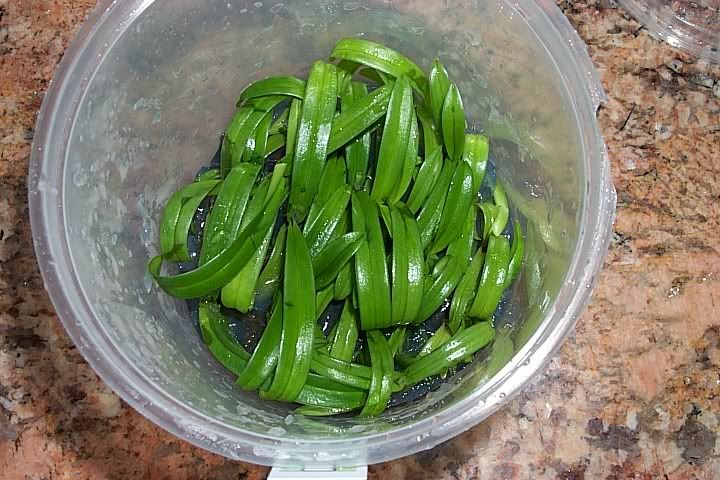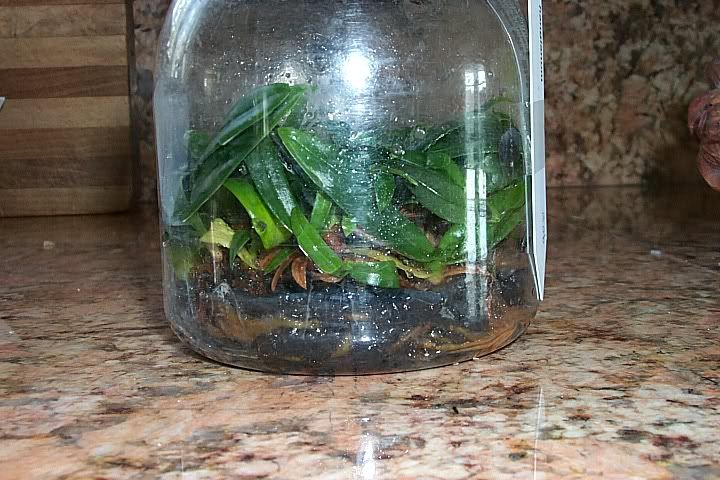Well, I don't really know how to approach this but I'll try my best. As most of us know Hengduan Mountain Biotechnology is the first company to be able to legally import flask and plants of paphs. that up to this point have not been legal in the U.S. Possible I'm not seeing the whole picture but to me it appears that us orchid growers aren't taking this seriously enough. Even though I'm a poor, and I mean poor grower of paphs. from flask, I feel an obligation to attempt to grow some of these guys up in order to get them established in the U.S. My thoughts are, what if tomorrow, for whatever reason they are no longer able to legally sell them here. Shouldn't more of us be jumping on the band wagon, and trying our best to grow these things? Well, I for one, am going to give it the old college try (even though, that was many, many moons ago). Today I received my 3 flasks that where sent from the Santa Barbara Show in Calif. The first flask I'd like to show you is the paph. micranthum. I know we can get these here but these were for me and no one else. These seem to be very tall, yet have no roots growing from the sides. Some of these have 3 or 4 sets of leaves on them. The flask has less plants that one would think due to the large size of these guys. I'm guessing 15 or possible a couple more in there.

Next is a photo of the Paph. barbigerum var. coccineium. Some of these have leaf spans of 3 to 4 inches. This flask seems to have 20 or so plants. Some of these plants have two sets of leaves but are not tall at all.

Last but not least is the flask of hangianum. These are in a different type plastic container that is much, much thicker in substance. The only way to get a photo is threw the side of the flask. Upon first evaluation, this seems to be the flask with the largest number of seedling in it. Most of these plants also seem to have two sets of leaves on them. They are almost crowding each other out. I did however buy the more expensive flask that was due to be deflasked upon arrival. Any suggestions on how to cut this flask so I can get them out in one disc? I tried a razor and it wouldn't budge.
I didn't order these until about a week and a half ago as there site was down for some time. So, naturally, I was lucky and they had everything that I wanted already on it's way here. I had them open the flasks and place cotton in them so they wouldn't get ruined in transit.

From the paperwork that I saw they only brought in 10 paph flasks and 21 cypripedium flasks. I also see very few of the newer paph. species brought in. There was lots of cypripedium hybrids brought in (300). So tell me why aren't we trying to establish these paphs.

Next is a photo of the Paph. barbigerum var. coccineium. Some of these have leaf spans of 3 to 4 inches. This flask seems to have 20 or so plants. Some of these plants have two sets of leaves but are not tall at all.

Last but not least is the flask of hangianum. These are in a different type plastic container that is much, much thicker in substance. The only way to get a photo is threw the side of the flask. Upon first evaluation, this seems to be the flask with the largest number of seedling in it. Most of these plants also seem to have two sets of leaves on them. They are almost crowding each other out. I did however buy the more expensive flask that was due to be deflasked upon arrival. Any suggestions on how to cut this flask so I can get them out in one disc? I tried a razor and it wouldn't budge.
I didn't order these until about a week and a half ago as there site was down for some time. So, naturally, I was lucky and they had everything that I wanted already on it's way here. I had them open the flasks and place cotton in them so they wouldn't get ruined in transit.

From the paperwork that I saw they only brought in 10 paph flasks and 21 cypripedium flasks. I also see very few of the newer paph. species brought in. There was lots of cypripedium hybrids brought in (300). So tell me why aren't we trying to establish these paphs.
Last edited:



